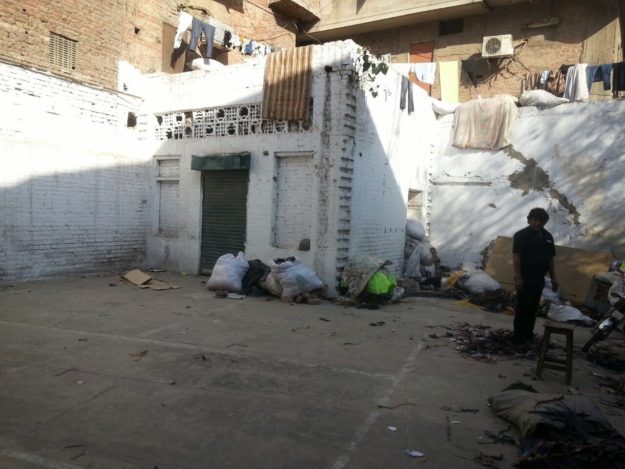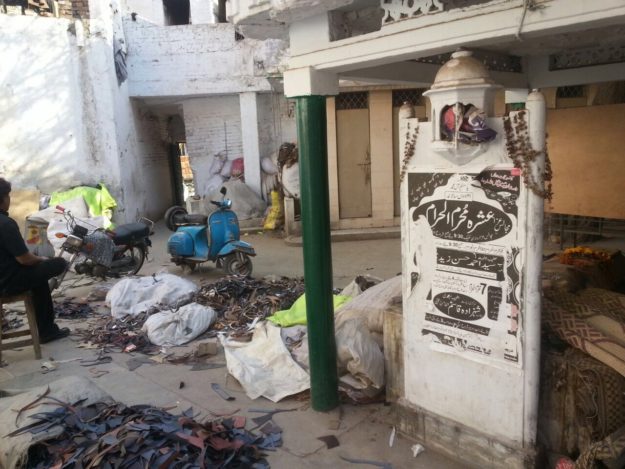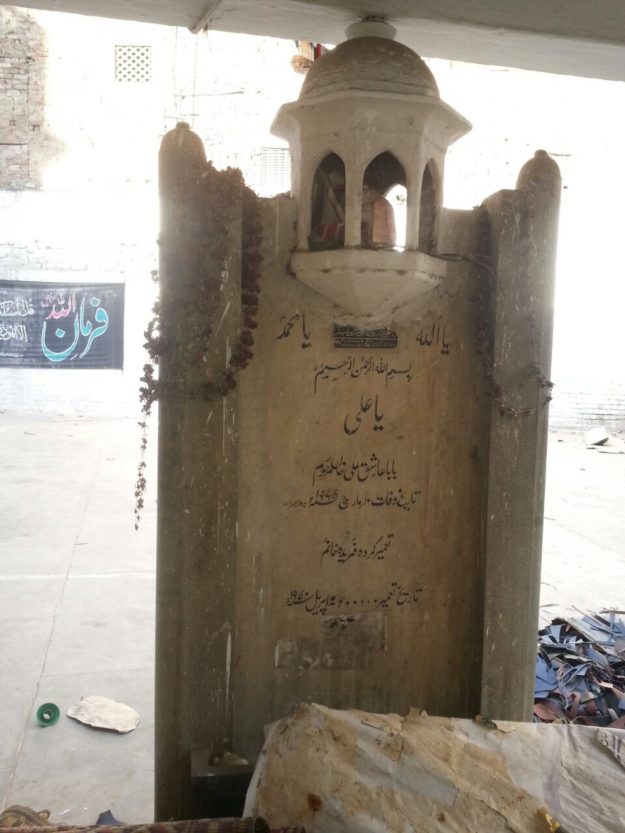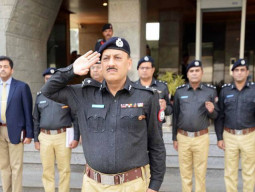
 PHOTO: ADNAN LODHI
PHOTO: ADNAN LODHIThe mehfil would last late into the nights with the regale simmering down only when the sun came up. This was perhaps exactly what the Mughal emperors had hoped for when they decided to construct the Takiya Maraasiyan in Lahore, near the famous Mochi Darwaza. The aim was to provide a hub for musicians and singers of their time to come together and further the Mughal era’s musical heritage for the world to enjoy. Travellers would kill their nights here, dropping in for the great artistry. And as for the performers, being invited to the Takia Maraasiyan had become something like a stamp of approval.
Benazir Culture Complex: Culture minister orders inquiry
But what the Mughals did not expect was that someday, the sacred space they had so lovingly made would be reduced to little more than a meagre leather factory.
 PHOTO: ADNAN LODHI
PHOTO: ADNAN LODHILahore being Pakistan’s oldest city is a veritable architectural museum, replete with places like the Takiya Maraasiyan that once served as cultural hubs but have now, succumbed to commercialisation. It has been about 37 years since the open land held its last performance by Ustad(s) Badar uz Zaman and Qamar uz Zaman; in fact, most Lahoris are probably unaware it ever even existed.
Modern musicians and government authorities have turned a blind eye to the Takia Maraasiyan. Their ignorance has left it dilapidated, littered and smeared with graffiti all around. The only connection to the glory days is ironically, the grave of late singer Ustad Aashiq Ali Khan, which lies here.
 PHOTO: ADNAN LODHI
PHOTO: ADNAN LODHIImran Ali, whose family has owned the strip of land for decades, has set up his tannery there now. “In my life, I have seen Ustad Aashiq Ali Khan conduct many musical activities here. Then, our elders would also tell us stories of things that happened here in the past, when we were children. The old room where the musicians stayed is still there but it’s been converted into a shop,” Imran told The Express Tribune. “I own the land so I have the right to use it however I like. But I wonder if there is really so much history attached to the Takia Maraasiyan, why doesn’t our government do something about it? I come from a family of artists myself and realise its significance. There are still some artists and gharanas living nearby. But no one likes to perform here now,” he lamented.
 PHOTO: ADNAN LODHI
PHOTO: ADNAN LODHIPromoting culture: Lok Virsa budget increase recommended
Ustad Shoukat Ali echoed Imran’s sentiments, calling it “cruel” of the government to not be taking any actions. “Singing is our profession; we are proud of it. We are also proud of what the Takia Maraasiyan was as it was only because of it that so many of us became successful,” he stated. “But it’s tragic that even musicians whose elders began their careers from here, like the Shaam Chourasi, Patiala and Shah Aalmi gharanas, don’t wish to come. Also, it’s cruel that the authorities are not protecting a cultural asset like this. Music is still alive in Pakistan. I think the Takiya Maraasiyan should be revived for everyone.”
Have something to add to the story? Share it in the comments below.



























1714024018-0/ModiLara-(1)1714024018-0-270x192.webp)









COMMENTS (1)
Comments are moderated and generally will be posted if they are on-topic and not abusive.
For more information, please see our Comments FAQ